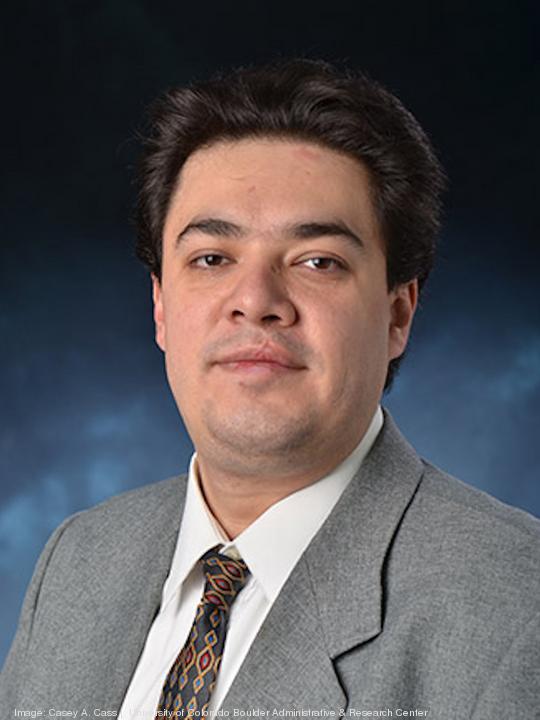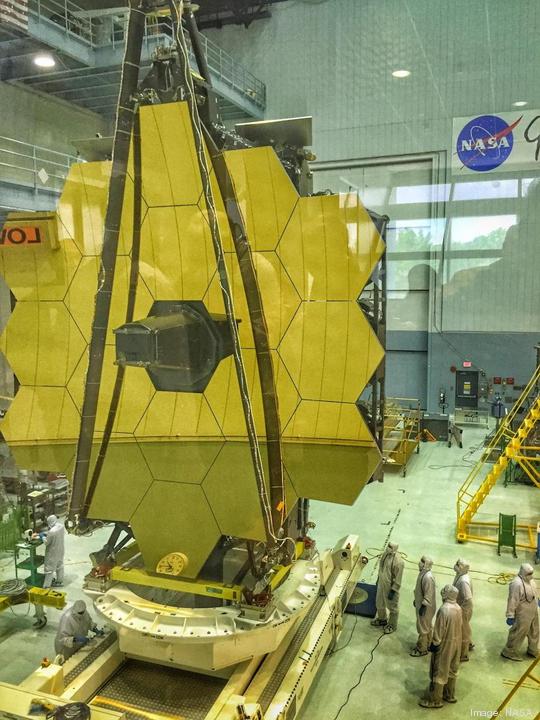
Even as a child, Francisco Muller-Sanchez wanted to learn more about the universe.
He grew up in Mexico City, but his family would spend summers at their vacation home in the countryside, where the population was sparse, and manmade lights didn’t obscure the skies. And he would stay up late into the night, using a telescope to gaze at the stars.
“I was fascinated with the sky at night,” Muller-Sanchez, Ph.D., said. “I knew I wanted a career related to space.”
That aspiration has ultimately led him to the University of Memphis, where he works as an observational astronomer and assistant professor in the Department of Physics and Materials Science. Recently, Muller-Sanchez received two grants from NASA, which will give him general observer time with the James Webb Space Telescope — NASA’s $10 billion tool that’s considered the most powerful space telescope in the world.
Both grants are for projects centered around black holes, and specifically, supermassive black holes.

The size of a penny
As Muller-Sanchez explained — and he described it simply for me — black holes are objects that have really large masses, but relatively small volumes. For example, he noted, if the sun was a black hole, it would have all the mass it has now, but a volume the size of U of M’s campus.
And if the Earth was a black hole, it would be contained in the volume of a penny.
“Imagine everything that is on the Earth — all the mass of the Earth — in the volume that is the size of a penny,” he said.
Supermassive black holes are ones that are, well, massive. Typically, they have the mass that’s the equivalent of a million or more suns.
“Imagine one million suns in a volume that is the size of the orbit of Mercury,” Muller-Sanchez said.
Muller-Sanchez’s projects are centered around two supermassive black holes, both light years away.
Project one: The very hungry black hole
One project, funded with a NASA award valued at $119,128, is called “AGN Feeding and Feedback in NGC 4151.” This project studies a supermassive black hole found in the galaxy NGC 4151 — over 50 million light years from Earth — and it’s one of the nearest galaxies to Earth to contain an actively growing supermassive black hole.
Muller-Sanchez’s goal is to detect, or confirm, different theories about the feeding of black holes.
“The gas and dust and open matter, that is in the vicinity of the black hole,” he said. “And in the end, it’s sucked by the black hole. That’s what people imagine, that the black hole eats everything around it. … I’m interested in the processes that are feeding the supermassive black hole.”
Project two: In a galaxy far, far (really far) away
The 50 million light years separating Earth and NGC 4151 is far, but compared with the distance of the galaxy studied in Muller-Sanchez’s other project, it seems like a trip to Nashville.
The galaxy in question is CID-42, which is almost 4 billion light years away.
CID-42 is an irregular galaxy — there are multiple galaxy types, for instance, the Milky Way is a spiral galaxy — and Muller-Sanchez has some intriguing theories about it.
CID-42 could have gone through a galaxy merger. Remember when First Horizon merged with IberiaBank in July 2020? In some ways, it’s like that — only we’re talking about galaxies combining, not banks.
“Imagine two galaxies that are in the universe, and then, with gravitational interaction they come too close, and they start orbiting each other,” Muller-Sanchez said. “And at some point, they interact … all the gas and dust are mixed, in a combination of the two galaxies.”
As a result of the merger, it’s believed there could be two supermassive black holes in CID-42 and not just one, which is unusual. Because at the end of the merger process, the supermassive black holes from each galaxy are supposed to merge as well.
But if these two haven’t merged yet, they’re technically binary supermassive black holes, which are black holes that are orbiting each other. And given their high masses and high speeds, they’d be producing gravitational waves: ripples in space time, caused by massive objects moving with extreme accelerations.
It’s also possible, however, that these two supermassive black holes have already merged. Since CID-42 is so far away, it’s difficult to tell.
And if they have merged, there would be so much energy produced from gravitational waves that the combined hole would be kicked from the center of the galaxy in the opposite direction. Think of a slingshot effect.
This would make the careening black hole a recoiling black hole, and according to Muller-Sanchez, it’s a process that’s never been observed. Its potential discovery is one of the primary objectives of Muller-Sanchez’s project, titled “Unveiling the Nature of CID-42. The Best Candidate for a Gravitational Wave Recoiling Supermassive Black Hole.”
But none of the theories about CID-42 have been confirmed. Though Muller-Sanchez and other scientists have been able to hypothesize with data from NASA’s other major space telescopes, the Chandra X-Ray Observatory and Hubble Space Telescope, they aren’t powerful enough to gain concrete information about a galaxy so distant.
And this is why Muller-Sanchez’s observation time with the James Webb Space Telescope is so important.
'In the history of mankind'
The James Webb Space Telescope — which launched on Dec. 25 atop an Ariane 5 rocket — is close to commencing operations; and Muller-Sanchez considers it the “most important astronomical project in the history of mankind.”
Given its power, the telescope could answer an array of questions about other galaxies — like CID-42 — and the wider universe.
It is worth noting that Muller-Sanchez won’t be directly interacting with the telescope.

He’ll send his data about CID-42 that’s been compiled from Hubble, Chandra, and ground telescopes — like object characteristics — and NASA will handle the observations. Once that has been done, Muller-Sanchez will then be able to download and study the information from a database.
Still, he’s excited, and honored, to have the connection to James Webb telescope. There were more than 1,000 proposals submitted to gain the access he now has for his projects, and fewer than 100 were accepted.
“It’s fantastic,” he said.
'Things that we don’t know'
Of course, all of this raises a question, which I posed to Muller-Sanchez: Why should people care about this work?
Why should people take interest in galaxies merging almost four billion light years away, when there’s a Memphis-based company like Terminix — which employs hundreds locally — set to merge with a British-based pest control business?
One answer could be the projects’ contribution to U of M’s research push, as it looks to retain its status as an R1 institution.
Another possible answer, which Muller-Sanchez pointed out, is related to gravitational waves. The manipulation of electromagnetic waves has led to a wide variety of integral and innovative technology. And the manipulation of gravitational waves, he asserted, could potentially do even more.
“You can start thinking of what we could do if we could manipulate gravitational waves, and the answers are things that you cannot imagine right now,” he said.
That’s not to say Muller-Sanchez’s project will explain how to manipulate gravitational waves. It won’t. But it could bring about a better understanding of them, an idea that goes hand in hand with Muller-Sanchez’s other answer about why people should care about his research: discovery.
“This is basic research, and basic knowledge, of things that we don’t know about the universe,” he said. “That’s how our society has evolved. All the technology that we have, started from basic knowledge of physics, in this case physics and astronomy. … There are things that we don’t know, that we would like to know."









